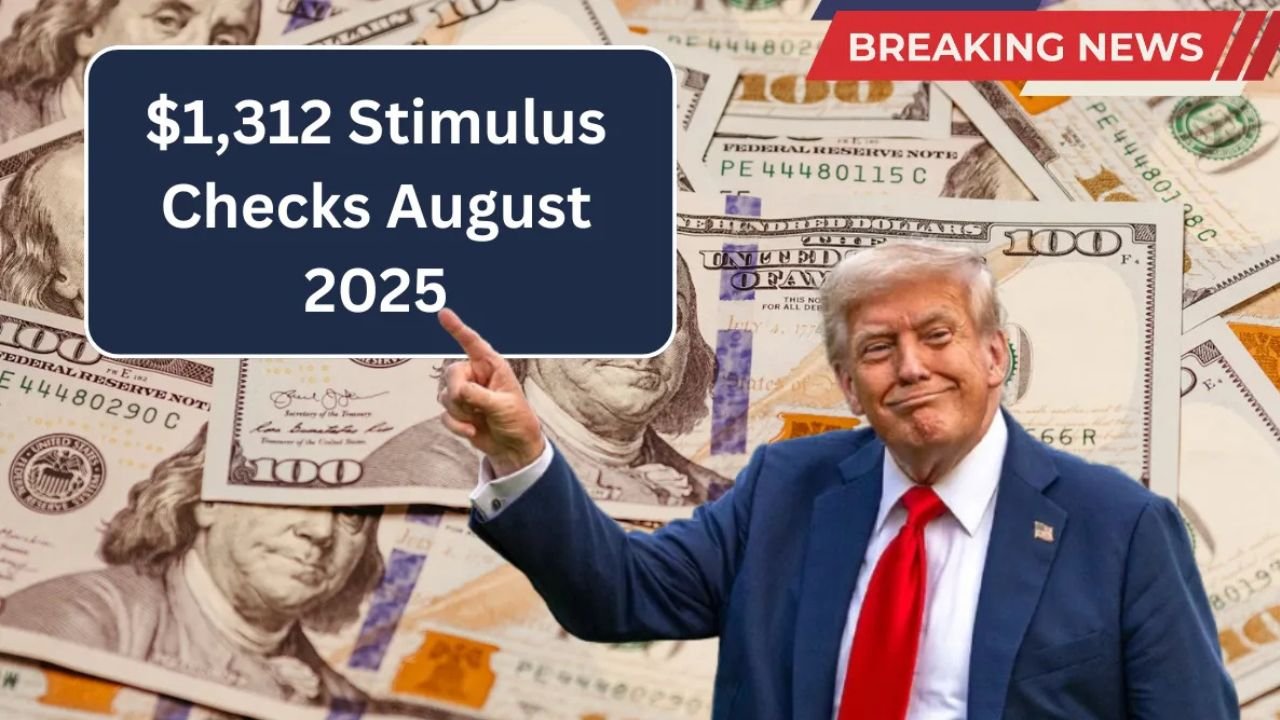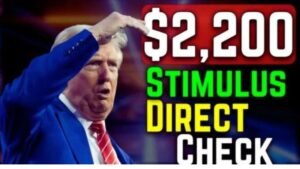With rising costs for groceries, gas, and housing, many Americans are feeling the pinch in 2025. The good news? The U.S. government is rolling out $1,312 stimulus checks in August 2025 to ease the burden. Aimed at seniors, veterans, and low-to-middle-income families, these one-time payments are designed to help millions manage inflation’s impact. Let’s break down what this stimulus is, who qualifies, when it arrives, and how to make the most of it.
What Are the $1,312 Stimulus Checks?
The $1,312 stimulus check is a one-time federal relief payment to support Americans facing high living costs in 2025. Unlike the emergency stimulus checks during the COVID-19 pandemic, this payment targets inflation relief, helping vulnerable groups cover essentials like bills, groceries, and healthcare. It’s a lifeline for those on fixed incomes and a boost for local economies as recipients spend at community businesses.
Why This Stimulus Matters
Inflation continues to strain budgets, especially for retirees, veterans, and families with limited income. The $1,312 payment can make a real difference by:
- Covering medical expenses or prescriptions.
- Paying for back-to-school supplies or household needs.
- Reducing high-interest debt to avoid financial stress.
- Supporting local businesses through everyday spending.
This stimulus is more than just money—it’s a tool for stability in tough economic times.
Who Qualifies for the $1,312 Stimulus Check?
Not everyone will receive this payment. It’s targeted to specific groups with clear eligibility rules:
- Social Security Retirees: Those receiving retirement benefits are automatically eligible.
- SSI/SSDI Recipients: Supplemental Security Income (SSI) and Social Security Disability Insurance (SSDI) beneficiaries qualify.
- Veterans with VA Benefits: Payments are processed through the Veterans Affairs system.
- Low-to-Middle-Income Earners: Single filers earning up to $75,000 or joint filers up to $150,000 are eligible, with phase-outs at higher incomes.
- Tax Filers: You must have filed a 2024 tax return or used the IRS non-filer tool.
- Exclusions: Dependents claimed on another’s tax return don’t qualify.
To confirm eligibility, check your status on the IRS “Get My Payment” portal or your My Social Security account at ssa.gov.
Payment Schedule for August 2025
The $1,312 stimulus checks will roll out on a staggered schedule in August 2025, based on payment method and recipient group. Here’s the timeline:
| Date Range (August 2025) | Payment Group |
|---|---|
| August 5–9 | Direct deposits for eligible taxpayers |
| August 12–16 | Deposits for Social Security, SSI, VA recipients |
| August 19–23 | Paper checks or prepaid debit cards |
Note: Direct deposits arrive fastest, while paper checks may take longer. Track your payment status at irs.gov using the “Get My Payment” tool.
How to Ensure You Get Your Payment
Good news: eligible recipients don’t need to apply—the payment is automatic if your information is on file with the IRS, Social Security Administration (SSA), or Veterans Affairs (VA). To avoid delays:
- Update Your Info: Ensure your bank details and address are current with the IRS or SSA.
- File 2024 Taxes: If you haven’t filed, use the IRS non-filer tool for low-income individuals.
- Check Status: Monitor your payment on the IRS “Get My Payment” portal.
- Watch for Notices: Look for IRS or SSA letters about your payment.
If your payment doesn’t arrive by late August, contact the IRS at 1-800-829-1040 or the SSA at 1-800-772-1213.
Key Details About the $1,312 Stimulus
Here’s a quick overview of the payment’s essentials:
| Feature | Details |
|---|---|
| Payment Amount | $1,312 (one-time) |
| Purpose | Inflation relief for essentials |
| Eligible Groups | Social Security, SSI, SSDI, VA, low/middle-income |
| Income Limits | $75,000 (single), $150,000 (joint), phase-out above |
| Tax Status | Non-taxable, doesn’t affect SNAP/Medicaid eligibility |
| Distribution Method | Direct deposit, paper check, or prepaid debit card |
| Tracking Tool | IRS “Get My Payment” portal |
Smart Ways to Use Your $1,312
This payment is tax-free and won’t affect eligibility for programs like SNAP or Medicaid. To maximize its impact, consider:
- Essential Expenses: Cover groceries, utilities, or rent.
- Debt Reduction: Pay down high-interest credit cards or loans.
- Emergency Fund: Save for unexpected costs.
- Future Planning: Invest in back-to-school needs or small home repairs.
Thoughtful spending can provide both immediate relief and long-term stability.
Protecting Yourself from Scams
Stimulus payments attract scammers. Stay safe by:
- Using Official Sites: Only check status on irs.gov or ssa.gov.
- Avoiding Unsolicited Requests: The IRS never asks for personal info via phone, text, or email.
- Reporting Fraud: Report suspicious activity to the IRS or your state’s cybersecurity office.
Stick to trusted sources to secure your payment.
Context of 2025 Stimulus Payments
The $1,312 payment builds on a history of U.S. stimulus efforts:
- 2020: $1,200 checks for COVID-19 relief.
- 2021: $1,400 payments for economic recovery.
- 2025: $1,312 to combat inflation’s effects.
This payment is tied to the average Social Security benefit in 2025, reflecting the government’s focus on supporting seniors and others hit hardest by rising costs. Some states may offer additional relief, so check your state’s revenue department for updates.
Frequently Asked Questions
Do I need to apply for the $1,312 stimulus check?
No, it’s automatic if your info is on file with the IRS, SSA, or VA.
Is the $1,312 payment taxable?
No, it’s not considered taxable income and won’t affect SNAP or Medicaid eligibility.
What if my payment doesn’t arrive in August?
Check the IRS “Get My Payment” portal or contact the IRS at 1-800-829-1040.
Can working individuals qualify for the $1,312 check?
Yes, if your income is below $75,000 (single) or $150,000 (joint).
Final Thoughts
The $1,312 stimulus check in August 2025 is a vital boost for seniors, veterans, and low-to-middle-income families facing inflation’s challenges. By understanding eligibility, tracking payment dates, and using the funds wisely, you can make the most of this relief. Stay vigilant against scams, keep your IRS and SSA info updated, and check the “Get My Payment” portal to ensure your payment arrives smoothly. This check isn’t just money—it’s a chance to ease financial stress and plan for a more secure future.




